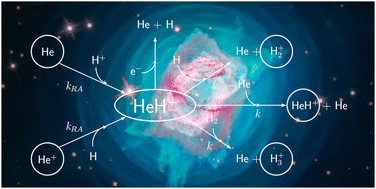The role of small molecular cations in the chemical flow of the interstellar environments
Abstract
Molecular ions have been ubiquitous in a variety of environments in the interstellar medium, from Circumstellar Envelopes to Dark Molecular Clouds and to Diffuse Clouds. Their role in the multitude of molecular processes which have been found to occur in those environments has been the subject of many studies over the years, so that we have acquired by now a complex body of data on their chemical structures, their possible function within chemical reactions and their most likely paths to formation. In the present work we review a broad range of such molecular ions, focusing exclusively on positive ions involving the smallest and simplest cations which have been either detected or conjectured as present in the interstellar medium (ISM). We therefore consider mainly molecular cations formed with components like H, H+, He and He+, atomic species which are by far the most abundant baryons in the ISM in general. Their likely structures and their roles in a variety of chemical energy flow paths are discussed and presented within the context of their interstellar environments.

- This article is part of the themed collections: 2023 PCCP HOT Articles and 2023 PCCP Reviews


 Please wait while we load your content...
Please wait while we load your content...